Last week I managed to snag an amazing deal. In this entry I mentioned that the best thing a big girl like myself can do is to buy items that fit. Imagine my shock when I found a brand new, synthetic, washable komon that fits me quite well, and has a great vintage vibe to it. Not only that, but it was marked down to $9.85! It arrived in a week, which is even more awesome.
I decided to pair it up with my spider obi – I’d forgotten what a pain in the butt that thing is to tie. Thankfully, my father is patient, kind, and always willing to lend a hand or two when I’m having trouble with my obi. I realized that the mauve on my new embroidred obiage tied into the stripes very nicely, so I decided to use that too.
My dad helped me align my obi so there are three awesome, adorable spiders visible. The tare is a bit long, but that was an intentional decision for optimum spiderosity. Yes, spiderosity is totally a word.
Overall, I’m quite pleased with this outfit. I think maybe an embroidred haneri of some sort might increase the vintage feel, but the white works fine for the time being.
Bonus: I had to kick someone out of “his” chair before taking the pictures. He was not amused.
Items used in this coordination
- Dark Pink Floral
- Rough-Woven Spiders
- Embroidered Dusty Chirimen
- Lilac with Olive

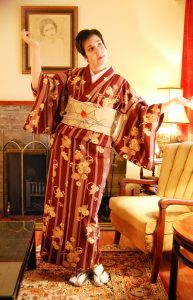
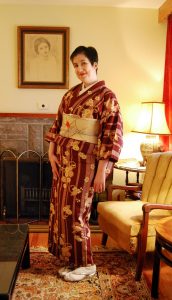
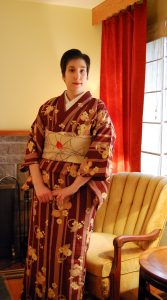
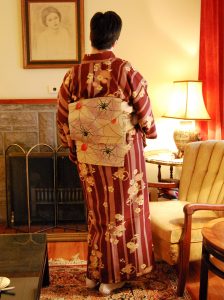
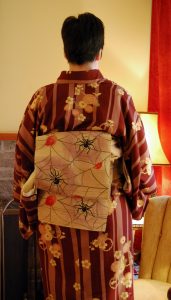
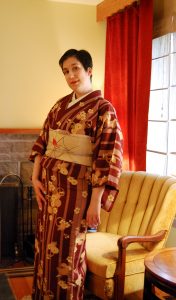
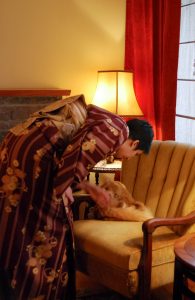
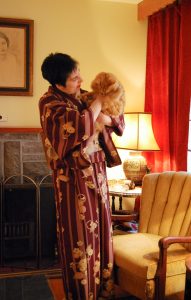
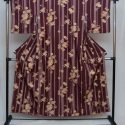
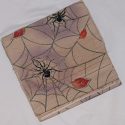
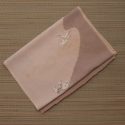
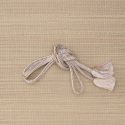



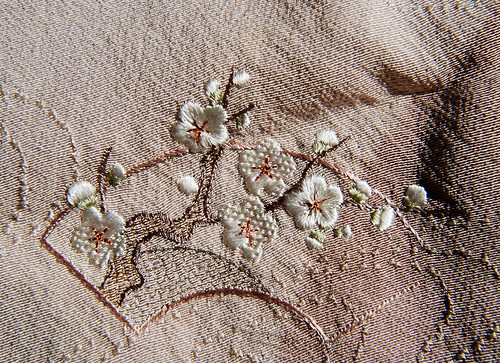

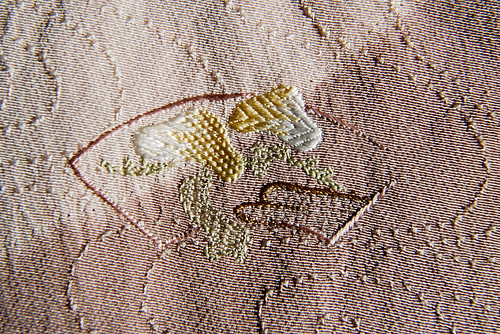


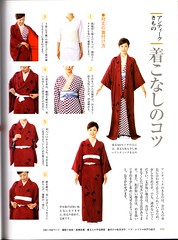
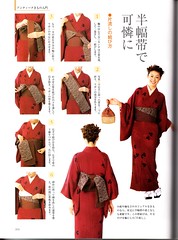














 Bebe Taian
Bebe Taian CHOKO Blog
CHOKO Blog Silk & Bones
Silk & Bones Gion Kobu
Gion Kobu